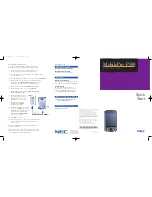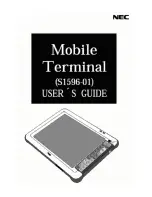
Page 230
Creating a Custom Expense Report
Determine whether the Rows will contain expense or date information, and place an “x” in the
appropriate cell. When you do this, you also define whether the label is Fixed or Variable. You
can place only one “x” in the Row section (columns 2–5).
Determine whether the Columns will contain expense or date information, and place an “x” in
the appropriate cell. When you do this, you also define whether the label is Fixed or Variable.
You can place only one “x” in the Column section (columns 6–9).
10. Define the dimensions of the Section. The dimensions of the Section appear in the green
columns (10–13).
11. Define the Dates and Intervals. The dates and intervals between dates appears in the light
blue columns (14–17).
In the Date cell, enter the row or column number where all the date information will be placed.
In the Dates cell, enter the number of blank columns (or rows) separating the date fields. If
there are no blank columns (or rows) between date entries, leave this number set to zero.
In the Start Day cell, enter the day of the week that starts the expense reporting period. Enter
a three-character abbreviation for the day (e.g., Sun, Mon, Tue).
In the Day cell, enter the row or column number where all the day information will be placed.
If the dates are in a row or in a column, enter the row or column number.
12. Define whether the Section is in list format. This setting appears in the light purple columns
(18–19).
# of
Rows
Represents the total number of rows in the Section, excluding any header or
total rows. In other words, this includes only the number of rows in the Section
where your handheld data will be placed.
# of
Columns
Represents the total number of columns in the Section, excluding any header
or total columns. In other words, this includes only the number of columns in
the Section where your handheld data will be placed.
Start Row
Is the number of the first row of the Section that will be filled with your
handheld data.
Start
Column
Is the number of the first column of the Section that will be filled with your
handheld data.
Summary of Contents for Treo 90
Page 1: ...Treo 90 Handheld User Guide Windows Edition ...
Page 10: ...Page 10 Contents ...
Page 26: ...Page 26 Introduction to Your Treo 90 Handheld ...
Page 36: ...Page 36 Entering Data in Your Handheld ...
Page 52: ...Page 52 Managing Your Applications ...
Page 113: ...Chapter 6 Page 113 Options menu About To Do List Shows version information for To Do List ...
Page 136: ...Page 136 Application Specific Tasks ...
Page 156: ...Page 156 Setting Preferences for Your Handheld ...
Page 192: ...Page 192 Advanced HotSync Operations ...
Page 212: ...Page 212 Using the Wireless Application Suite ...
Page 234: ...Page 234 Non ASCII Characters for Login Scripts ...












































